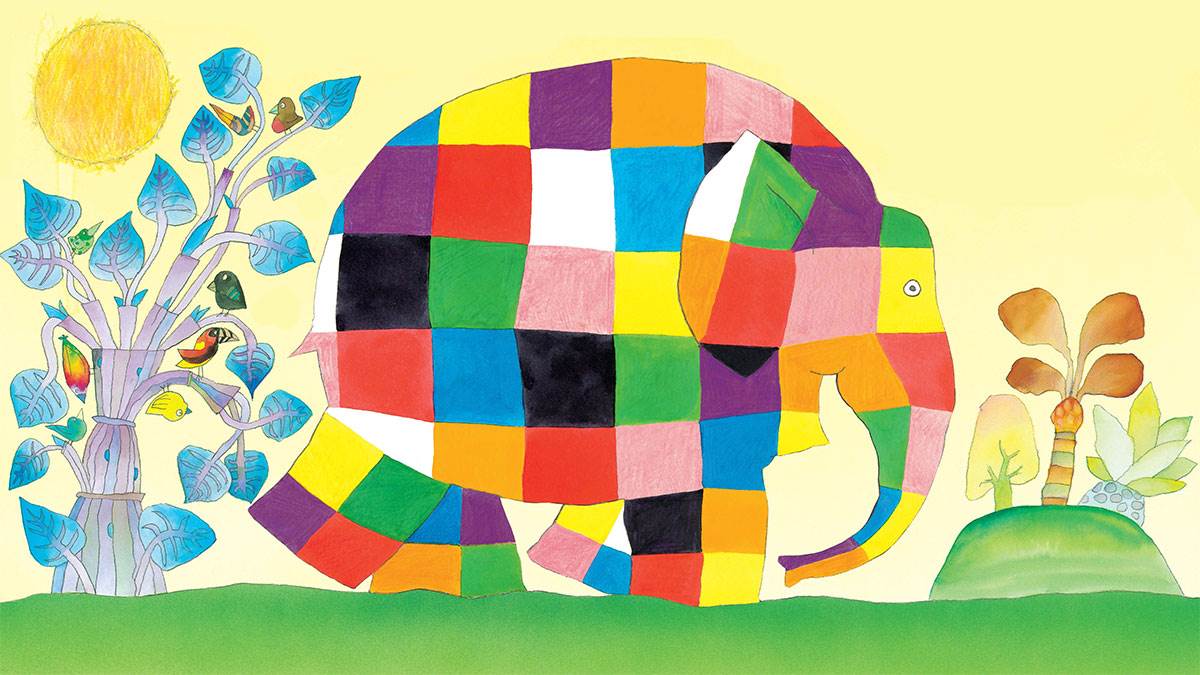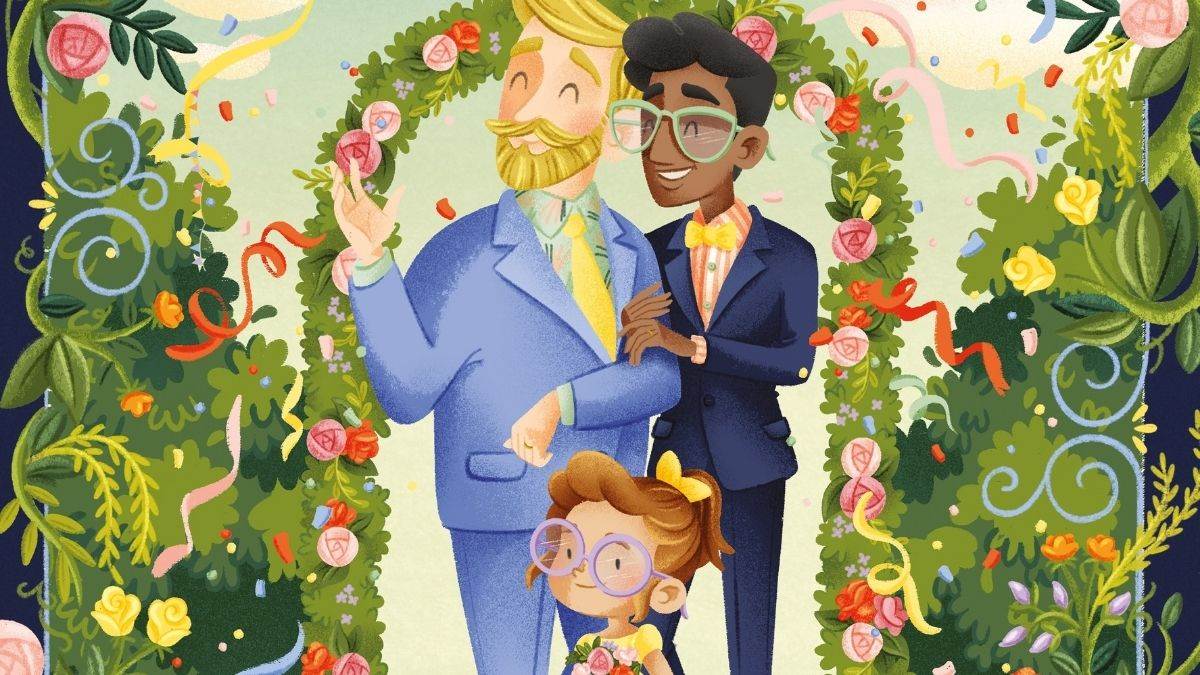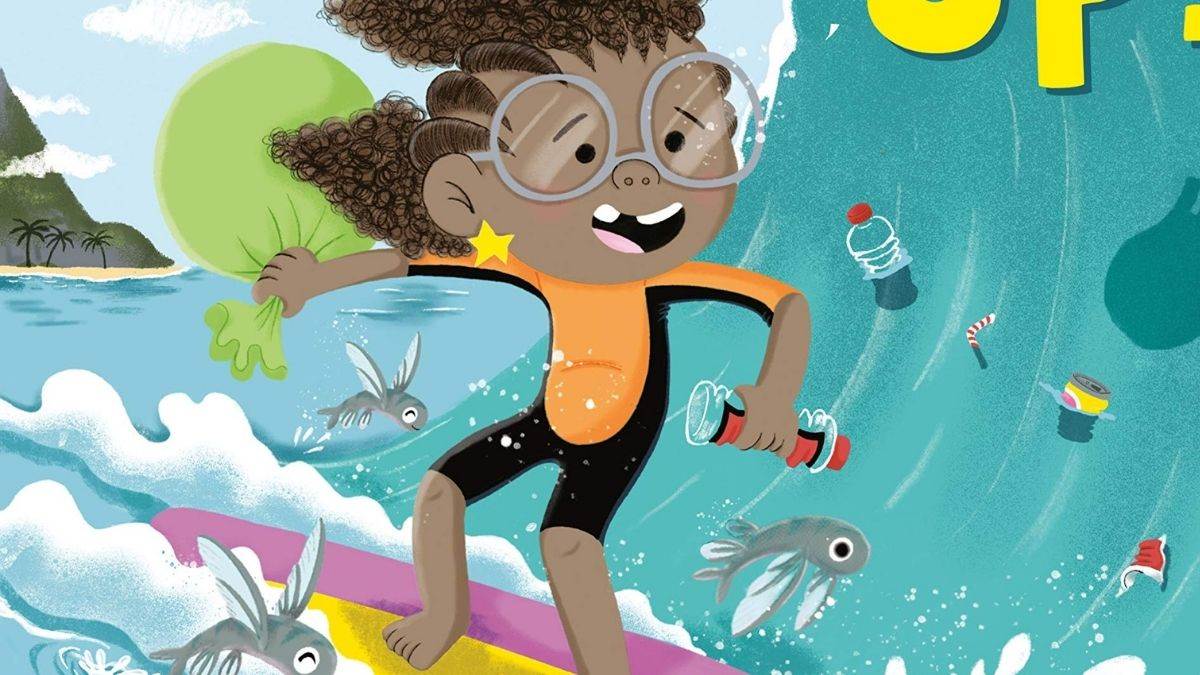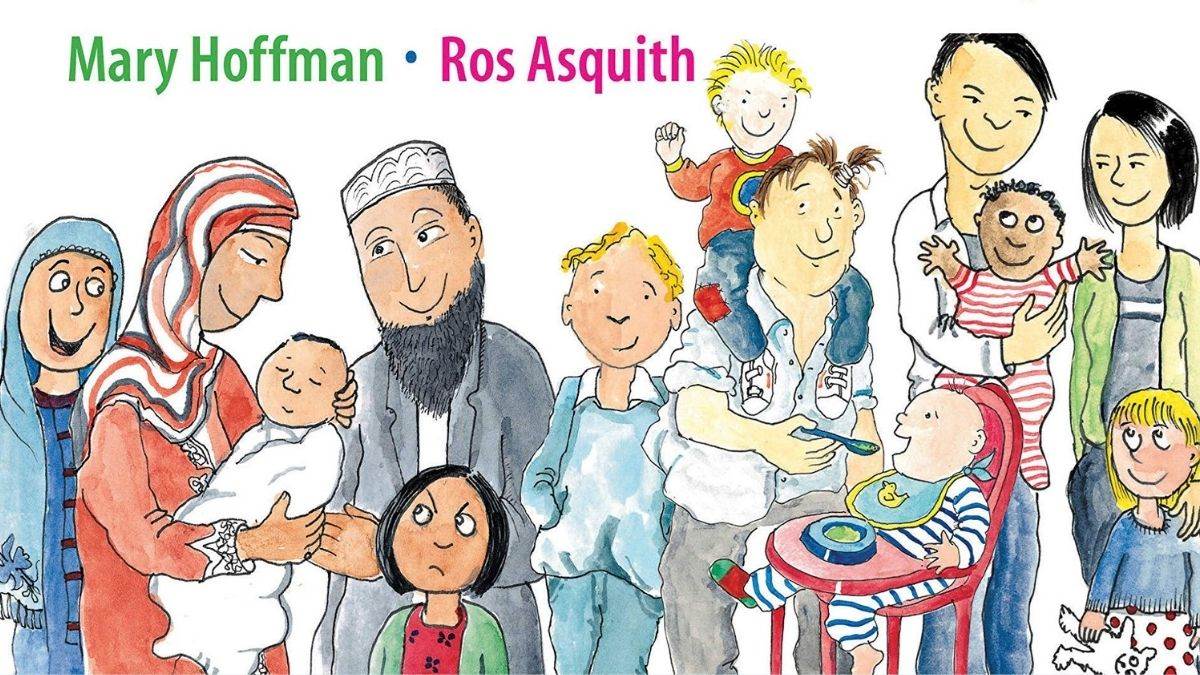How we picked the 100 best children's books of the last 100 years
Published on: 29 Mehefin 2021
How on earth do you pick just 100 children's books to be the best of the last 100 years? And what makes a good children's book anyway? Here are the secrets behind how we chose the books that made the list.
 Illustration: Elmer by David McKee
Illustration: Elmer by David McKee
How to choose 'the best' children's books?
Impossible, we hear you cry!
It’s certainly very tricky, especially when you love children’s books as much as we do, and when there are so many amazing ones out there.
So, rather than make a definitive list, this is our favourite 100 books from the last 100 years. Read it, tell us what should have made the cut and what your favourites would be!
What was important to us in creating this list was to curate something that reflected the diverse nature of children’s lives today and to celebrate the truly brilliant – and often game-changing – books that we know entertain, inform and delight children.
To help us decide our list, we enlisted the help of Jake Hope, the Chair of the Youth Libraries Group and CILIP Carnegie Greenaway Working Party, The Times Children’s Book Editor Nicolette Jones, authors Catherine Johnson and Smriti Halls, Illustrator James Mayhew, Fen Coles , Co-Director of Letterbox Library, Alex Strick, Co-Founder of Inclusive Minds, and children’s book expert Julia Eccleshare.
The brilliant suggestions from our panel of experts, previous lists of children's classics and our own favourites from the BookTrust Best Book Guide and our programmes and prizes gave us a huge list of amazing children’s books. How would we get down to a final 100?
Deciding which ones to take off the list
First, since our list of 100 books only includes books that have been first published in the last 100 years, there were some we couldn’t include, such as The Railway Children, Alice In Wonderland, Little Women and The Wind in the Willows.
Second, we agreed that we should only feature one book by any one illustrator or author in the list to give as much space as possible for a range of creators. In fact, the eagle-eyed among you will spot two books each by Michael Rosen and Helen Oxenbury – but they are our only exceptions (and, well-deserved ones, we’re sure you’ll agree).
When authors and illustrators have produced such a variety of fantastic works, it was of course very difficult to choose just one – our favourite Judy Blume was Are You There, God? It’s Me, Margaret because of its honest depiction of a girl’s coming of age, but you may think differently! We chose Jamila Gavin’s The Wheel of Surya, but you may think Coram Boy is better. Elmer or Mr Benn by David McKee? (We couldn’t resist everyone’s favourite rainbow elephant) – and it was very hard to choose our favourite John Burningham book (we chose Would You Rather?... in the end because it’s so fun to read aloud and talk – and laugh! - about).
Third, we wanted to highlight a greater diversity of authors and illustrators in our list and celebrate books that include all children. Hence, we chose picture books like James Catchpole and Karen George’s What Happened To You? which – as well as being a brilliant story about playing pirates – thinks in a brilliantly accessible and friendly way about the experience of having a visible disability and how we can best talk about it.
 Illustration: Uncle Bobby's Wedding by Sarah S Brannen and Lucia Soto
Illustration: Uncle Bobby's Wedding by Sarah S Brannen and Lucia Soto
Improving representation
We also chose Uncle Bobby’s Wedding by Sarah S Brannen and Lucia Soto, a book that was originally published in 2008 and, at that time, featured a cast of guinea pigs in a story about gay marriage. In Brannen’s republished version, illustrated by Lucia Soto, in 2021, the guinea pigs are now humans – a welcome change in representation - and, as in the original story, the focus is on the celebration of Uncle Bobby’s wedding to his boyfriend Jamie – and a sweet reminder that he’ll still always love his favourite niece.
In Dave and the Tooth Fairy by Verna Wilkins – and illustrated in 2019 by Carl Pearce (and originally in 1993 by Paul Hunt) we see a black boy featured as the protagonist in a book about the Tooth Fairy. Sadly, black children remain a rarity as main characters in picture books. To that end, we also included Nathan Bryon and Dapo Adeola’s Clean Up, a book featuring a beautifully depicted modern black family which also contains an ecological focus.
 Illustration: Clean Up! by Dapo Adeola
Illustration: Clean Up! by Dapo Adeola
Explaining the world to younger readers
Some books in our list are simply hilarious, like Jon Klassen’s I Want My Hat Back or Drew Daywalt and Oliver Jeffers’ The Day the Crayons Quit. Some are heartbreaking, like Anne Frank’s Diary of a Young Girl or A Monster Calls by Patrick Ness. Some stories, from Francesca Sanna’s refugee story in The Journey to Once by Morris Gleitzman and The Arrival by Shaun Tan, are perfect examples of the way that children’s books can help explain the world to younger readers; some, like Cressida Cowell’s How To Train Your Dragon or George by Alex Gino remind children that it’s okay to be yourself, no matter what your family, school or the wider world expects of you.
We tried to include a variety of funny, serious, fun and silly and informative books with different messages and themes.
We also wanted to include a variety of genres rather than limit ourselves just to novels and picture books, so we included graphic novels such as Luke Pearson’s Hilda and the Troll, Raymond Briggs’ Fungus The Bogeyman and Dav Pilkey’s Dog Man – a publishing phenomenon that has got millions of children reading. Poetry was also included, with Joseph Coelho’s Werewolf Club Rules!, Benjamin Zephaniah’s Funky Chickens, Michael Rosen and Chris Riddell’s A Great Big Cuddle: Poems for the Very Young and John Agard and Grace Nichols’ Under the Moon and Over the Sea: A Collection of Caribbean Poems.
We also included some of our favourite nonfiction books, such as Atinuke and Mouni Feddag’s Africa, Amazing Africa, Raman Prinja and Chris Wormell’s stunning Planetarium, Mary Hoffman’s Ros Asquith’s lovely and inclusive The Great Big Book of Families and William Grill’s illustrated fiction/nonfiction masterpiece, The Wolves of Currumpaw.
 Illustration: The Great Big Book of Families by Mary Hoffman and Ros Aquith
Illustration: The Great Big Book of Families by Mary Hoffman and Ros Aquith
Helping all our readers find the right book
Last, we wanted the rough age ranges of the books to be reasonably evenly distributed, so that we weren’t accidentally forgetting about brilliant books for 8-year-olds or great teen reads. Therefore, you can also view our 100 Best Books divided in age-themed booklists here:
Best books for 12-14 year olds
In the end, however objective we aimed to be in our selection, there's no doubt that any list of best books is by its very definition, a subjective one. At the end of the day, and after much debate, Booktrust's 100 best books are simply that – our favourites. We hope that by sharing our list with you, we'll get people all around the country debating their own favourites, too.
Most important of all, we hope it will provide inspiration to everyone to read and revisit the children's books that they love best, as well as hopefully discovering some new ones. Enjoy!
How many of our 100 best books have you read? Check them off your list here!
Topics: Features
